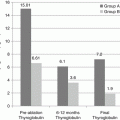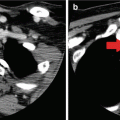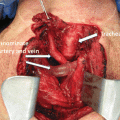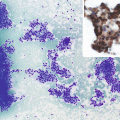Arguments for elective neck surgery
Arguments against elective neck surgery
Improved staging
Extremely low rates of recurrence if observed
Improved targeting of adjuvant therapy
Excellent survival without elective surgery
Reduced recurrence rates
Procedure morbidity
Reduced need for salvage surgery
Sites of recurrence not routinely addressed in elective setting
Reduced postoperative Tg
Improved survival
The first point to state in any debate about END for differentiated thyroid cancer (DTC) is that there is currently no prospective evidence base on which to draw any concrete conclusions. That is not to say that the question is not of major concern. Quite the contrary, an increasing number of patients present with DTC [1–10], and therefore clinical decisions must be made in the patient’s best interest in every case.
Although the title of this book refers to differentiated thyroid cancers, for the purposes of this debate, we will focus on papillary thyroid cancer (PTC). This is the most common DTC and the histological type which most commonly metastasizes to the lymph nodes of the neck. Follicular and Hurthle cell carcinomas have lower rates of lymph node metastasis and therefore are not considered for END.
The topic for this debate is a recent one which has developed in the last 10–15 years. Prior to that, thyroid cancer was largely a clinical disease. Now it has become a disease of imaging and biochemical investigation. Evaluation of recurrent disease has changed from clinical to identification of microscopic disease with biochemical tests and ultrasound-guided fine needle aspiration.
The first American Thyroid Association (ATA) guidelines in 2006 made a casual reference to consider ECND in PTC. However, promptly the committee recognized the invalidity of this approach and the high complication rate. Subsequently, the committee revised the recommendation in the updated 2009 guideline to the use of elective nodal dissection in selected patients in the high-risk category with a high probability of occult nodal disease.
What Is an Elective Lymph Node Dissection?
An END is a procedure which excises regional lymph node compartments from the neck when there is no obvious pre- or intraoperative evidence of nodal metastases. This should not be confused with removal of peri-thyroid nodes in conjunction with a thyroidectomy or sampling of lymph nodes in the central or lateral compartment.
Most groups now agree with the definitions that a central END involves levels VI and VII. This extends craniocaudally from the hyoid bone to the innominate vessels and laterally from carotid artery to carotid artery [11]. A lateral END will include levels II-V, with sparing of level I and levels IIb and Va (superior to the accessory nerve) [12].
In modern thyroid practice then, any patient who is considered free of regional disease following adequate preoperative assessment (ultrasound in most cases) will be a candidate for either END or observation of the neck.
Elective Lateral Lymph Node Dissection
If routinely performed, elective lateral lymph node dissection (ELND) for PTC, we see rates of metastatic disease which exceed 20% [13]. However, this has no clinical implication. It is a safe procedure which has gained acceptance within the field of head and neck oncology for squamous cell carcinoma. ELND is recommended for lesions of this type which are treated surgically and have a recognized rate of metastatic disease of >20% in the cN0 setting.
However, although safe, ELND is morbid. Not only is the surgical incision significantly longer than for thyroidectomy alone, but the procedure risks the cervical plexus, the facial and accessory nerve, and the sympathetic chain and results in long-term cosmetic changes to the neck [14–18]. So despite a relatively high yield of metastatic nodes, ELND which was once considered appropriate for PTC [19–22] is now not supported by major international guidelines [23, 24].
In part this change in management relates to the superior accuracy of ultrasound assessment of the lateral neck in comparison to the central neck [25]. However, the reader should remember that at least 20–30% of lateral necks harbor occult disease despite this improved accuracy. Even though over one in five patients with a cN0 lateral neck harbor metastases, very few recur. Those that do can be detected early and almost universally salvaged with neck dissection [26–29]. The reason that ELND has been abandoned is simply that the risks outweigh the benefit.
Arguments for Elective Central Compartment Lymph Node Dissection
Proponents of elective central compartment lymph node dissection (ECND) consider it a low-morbidity procedure and cite advantages of the approach including improved staging information in order to risk stratify and inform adjuvant treatment decisions, reduced rates of salvage surgery which can be challenging, lower rates of postoperative thyroglobulin (Tg), lower rates of recurrent disease, and improved survival. We will deal with these points individually.
Patients with disease limited to the thyroid (no evidence of metastases) have excellent survival and as such are considered low risk [30]. Such patients have survival rates of 95% at 10 years irrespective of the approach to treatment [31, 32]. Clearly then, even if a survival benefit were associated with more aggressive approach to the N0 neck, the impact would be so low that it would be impossible to prove. Not surprisingly then, it is now accepted that ECND has no role in improving survival for patients with PTC.
For most patients, recurrence rates are a more realistic measure of treatment success. It has been shown that the use of ultrasound and thyroglobulin assessment at 12 months can be used in the process of dynamic risk stratification to describe the response to treatment and quantify the risk of subsequent recurrence. Prospective evidence has been reported which suggested that Tg levels at 6 months are lower following total thyroidectomy plus ECND than for total thyroidectomy alone [33]. However, with time those initial results were not durable, and long-term outcomes show no significant difference in Tg [34]. In addition, in studies where ECND is not performed, ultrasound assessment of the neck during follow-up does not suggest that recurrence rates are significant [35]. When subjected to meta-analysis, the impact of ECND suggests no improvement in rates of recurrence [36]. The overall recurrence rate of 2% is unlikely to be changed with or without ECND as long as the central compartment is evaluated thoroughly at the outset.
Salvage surgery is accepted to carry higher risk to the parathyroid glands and recurrent laryngeal nerve than primary procedures [37]. For that reason, proponents of ECND argue that removal of potentially metastatic, clinically occult disease from the central neck is beneficial in order to prevent the need for future salvage surgery. However, two critical points must be considered before accepting this fact. First, as stated earlier, recurrence rates in this group are vanishingly low in the central neck and have never been convincingly proven to be lower following ECND [26]. Second, although the world’s most expert surgical groups have demonstrated that ECND can be performed with low rates of morbidity [38–40], this is not true for the vast majority of surgeons who operate on thyroid cancer [41–43]. The additional morbidity associated with ECND for all patients must be weighed against any assumed outcome benefit on an individual patient basis.
A more nuanced argument for ECND is that the procedure provides additional prognostic information which can be used to more accurately risk stratify patients postoperatively [13]. Indeed, for patients aged 45 years or over, the presence of nodal metastases converts their AJCC staging from early (I/II) to advanced (III/IV) disease [30]. In the American Thyroid Association (ATA) guidelines, the presence of nodal disease corresponds with an increased risk of recurrence [23]. This practice has much in common with staging END procedures which are used in oral cancer, for example. In keeping with more aggressive diseases, not only do some groups use the information as a prognostic tool but as a tool for selection of patients for adjuvant therapy in the form of RAI [13, 39, 44, 45]. However, this must be seen in the context of a far less aggressive disease. As stated above, outcomes are excellent irrespective of the extent of therapy in patients free of metastatic disease and the concept that upstaging patients who have excellent outcomes only serves to increase both patient anxiety and treatment intensity without good reason.
Arguments Against Elective Central Neck Dissection
Having examined the reasons behind support for ECND and found flaws on every front, now consider the arguments against ECND.
It is well accepted that PTC metastasizes often and early [46]. This is true for both the central and lateral lymph nodes [13]. In contrast to ELND, which has now been abandoned, controversy still surrounds the central neck. This hinges on the perception that central neck surgery is associated with low morbidity, an opinion which is outdated [40, 41, 47, 48]. Experienced surgeons in centers of excellence have long argued that central neck surgery can be performed without additional complication in comparison with total thyroidectomy alone [49]. However, the majority of patients are treated outside such centers by surgeons. Indeed, less than 20% of patients in the USA have total thyroidectomy in a center which performs more than 12 such cases per year [50]. It is well recognized that outcomes for thyroid cancer surgery are associated with surgical experience [51, 52]. Ywata et al. found that rates of permanent recurrent laryngeal nerve injury and hypoparathyroidism increased from 1.5% to 5.9% and 2.3% to 11.8%, respectively, when ECND was performed with total thyroidectomy in a center which at least 75 such cases per year [43]. These high rates of morbidity result in significant impact on patients’ day-to-day lives in a group who are likely to survive in the long term. Although the rate of occult disease encountered in this study reached 67% in the ECND group, overall recurrence rates were 1.9%. It is critical that the impact of the treatment does not outweigh the impact of the disease. As we always propose, let the punishment fit the crime, and let the treatment not be worse than the disease!
The high rates of occult disease found during elective neck surgery make many clinicians uneasy about observing lymph node basins which are at risk of metastatic involvement. However, such occult nodes are extremely unlikely to progress to present with clinically meaningful “recurrence.” With long-term follow-up, overall rates of recurrence in patients with observed central neck are well below 5% [26, 27, 43]. Indeed, postoperative recurrence rates in the central neck itself occurs in <1% of patients who do not undergo ECND. This highlights just how good outcomes are in this patient group [26]. Even for those patients who may be considered at highest risk (e.g., older patients, men, and those with evidence of metastatic nodes in the peri-thyroid tissues removed at surgery), recurrence rates at 5 years do not exceed 4% [53]. One must consider whether a condition with such indolent biology should be treated with a morbid procedure such as ECND.
Clearly, with such low rates of recurrence, even if ECND did prevent recurrence, the difference would be small. So small that when the ATA considered this question, they calculated that around 6000 patients would be needed to reliably prove the impact ECND had on recurrence [54].
This calculation should not be interpreted as evidence that we will never know whether ECND should be performed, quite the opposite. This proves that with such large groups required to reach statistical significance, clinical significance will never justify the practice. Only if the morbidity of the procedure was lower than its impact on outcome would the practice be defensible, and as stated above for all but the most experienced surgeons, this is not the case.
Given the relatively high morbidity of ECND and the low impact on outcome, it is not surprising to find that the procedure is not cost-effective [55]. Not only does the procedure cost around $10,000 but, in addition, the upstaging of low-risk patients which results in increased use of adjuvant RAI incurring yet more costs [13]. In a cost-effectiveness analysis, Zanocco et al. calculated that recurrence rates would have to exceed 10% in order for ECND to break even [55]. It is likely that had contemporary evidence relating to the observation of small-volume recurrences rather than salvage surgery for all been included in this analysis, the calculated rate would have been even higher [56]. Clearly then, cN0 patients do not qualify for ECND on the grounds of cost in a similar way they do not qualify in terms of clinical benefit.
Although it is accepted that revision neck surgery is associated with higher risks than primary procedures [57], salvage surgery is so rarely required in this low-risk patient group that this argument can almost be ignored. Nonetheless, before dismissing out of hand, consider the actual intraoperative findings in salvage central neck surgery. When Clayman et al. reported their findings in 210 patients with persistent of recurrence central neck disease, they found that the majority had disease dorsal to the recurrent laryngeal nerve, deep in the thoracic inlet, or in the region of the vertebral artery [58]. Dissection in such areas carries significant risk in the primary or recurrent setting, and it is highly unlikely that surgeons would be comfortable addressing these during an ECND. Not only is salvage surgery rare and not avoided by ECND, but when recurrences are analyzed in detail, we see that surgeons would rarely dissect out nodes from the critical areas in which it recurs again arguing against the practice.
Summary
END in differentiated thyroid cancer is used to be considered the standard of care. During the twentieth century, improved appreciation of disease biology in tandem with our understanding of the morbidity associated with lateral neck surgery led to ELND being abandoned. ECND became highly controversial when in 2006 the ATA guidelines stated the ECND should be considered for PTC [59]. This led to increasing rates of ECND internationally. Since that point, the two subsequent updates to the guideline have moved away from this position stating that ECND “may be considered” in 2009 [59] and that “management without ECND may be appropriate” in 2015 [23].
ECND has had ebbing support due to the recognition that the oncological impact is minimal at best. Patients considered cN0 have excellent outcomes, and the concept that upstaging this patient group is advantageous has been discredited both clinically and financially. The historical belief that central neck surgery is not associated with complications has been proven incorrect. In all but the most experienced hands, meaningful clinical outcomes are worse following ECND without an improvement in oncological outcome. All of these points alter the risk-benefit ratio for patients and clinicians considering whether or not ECND should be performed.
Our current practice in the management of the neck in DTC is to get appropriate preoperative imaging with ultrasound and CT scans if necessary and ultrasound-guided fine needle aspiration of suspicious lymph nodes. At the time of surgery, we critically evaluate the central compartment and superior mediastinum for any suspicious lymph nodes. If there are suspicious nodes, we would consider appropriate clearance of that area. We generously use frozen section as a large number of patients in the USA have Hashimoto thyroiditis which may confuse the issue of END.
Conclusion
If you are a high–volume thyroid surgeon with vast experience of central neck surgery and good evidence of extremely low complication rates, and you are practicing in a healthcare system with limitless resources, and you are treating an elderly male group of patients with advanced primary tumors who have no evidence of metastases in the central neck elective neck surgery, you might consider ECND despite the limited benefit it confers. In all other circumstances, elective lymph node dissection for differentiated thyroid cancer cannot be justified.
Stay updated, free articles. Join our Telegram channel

Full access? Get Clinical Tree








